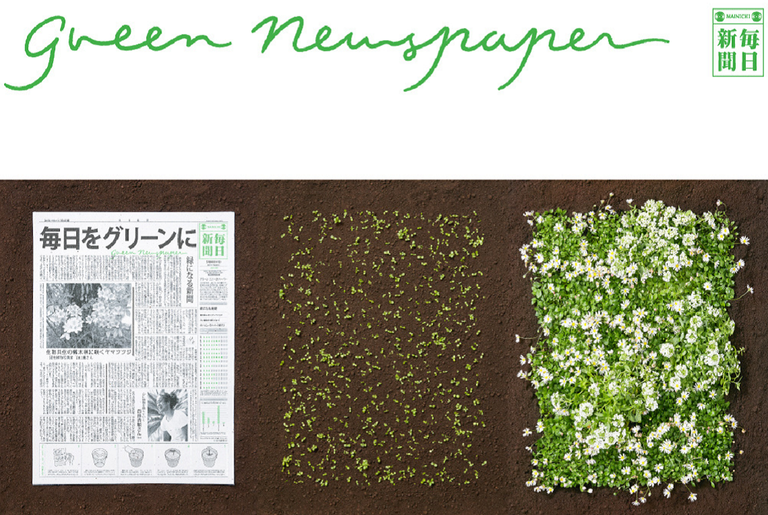
By recovering clothes discarded in the West, Togolese designer Amah Ayiv gives them new life through his high fashion creations.
In Japan, one of the most famous national dailies invented a one hundred percent sustainable newspaper. If you plant it, it will bloom!
Japan once more demonstrates to be an advanced country. Its latest invention consists in a newspaper made of recycled and vegetable paper that you can plant after you’ve read it. It is called “Green Newspaper” and was invented by the publisher of the famous Japanese daily, The Mainichi Shimbunsha.
Paper that can be planted is not news. It has been on the market for some years and is a mixture of recycled paper, water and small flowers or herbs seeds (it can also be easily made at home). And it can be re-used in a creative way: once you’ve finished with it, don’t throw it, rather tear it into small pieces, plant and water it and within a few weeks you’ll unexpectedly have plants and flowers.
The idea was conceived by Dentsu Inc, one of Japan’s largest advertising agencies, which works with “The Mainichi”. The green newspaper is not the first sustainable initiative undertaken by the Japanese daily. Its commitment to environmental protection is already well-known thanks to a previous advertising campaign on water donations for populations suffering from thirst. “The Mainichi doesn’t take action only through information, but also by solving global issues”.
The eco-friendly newspaper has had a huge success, a circulation of over four million copies a day across the country and revenues of about eighty million yen, equivalent to over $700,000. The initiative has also involved schools, in order to raise children’s awareness on environmental issues and teach them the importance of recycling. Because in order to reduce CO2 emissions generated by traditional waste disposal systems we should recycle waste materials, and paper most of all.
Siamo anche su WhatsApp. Segui il canale ufficiale LifeGate per restare aggiornata, aggiornato sulle ultime notizie e sulle nostre attività.
![]()
Quest'opera è distribuita con Licenza Creative Commons Attribuzione - Non commerciale - Non opere derivate 4.0 Internazionale.
By recovering clothes discarded in the West, Togolese designer Amah Ayiv gives them new life through his high fashion creations.
All catwalks in July will be broadcast online: after Paris, it’s Milan Digital Fashion Week’s turn. And the biggest beneficiary is the environment.
The book Fashion Industry 2030 aims to contribute to reshaping the future through sustainability and responsible innovation. An exclusive opportunity to read its introduction.
From fashion to design, from architecture to construction, biomaterials and their applications are constantly multiplying. And designers are responding to this revolution in many different ways.
A new study on linen, presented at the Milano Unica trade show, highlights the material’s numerous advantages and low environmental impact.
Victor Papanek spearheaded social and sustainable design based on political awareness rather than consumerism. A biography of the author of Design for the Real World.
Two world-famous designers, Ross Lovegrove and Marcel Wanders, on the relationship between plastic and design. The stimulus for this conversation was offered by an exhibition at the past Milan Design Week inviting 29 designers to rethink their approach to this (now) demonised material.
Getting people to consume less is important, but it’s not enough. There has to be a cultural shift, and design is likely to have a key role in transforming our approach to plastics.
A journey to discover leather tanneries in Dhaka, the capital of Bangladesh, among terrible working conditions, pollution and laws left unenforced.








